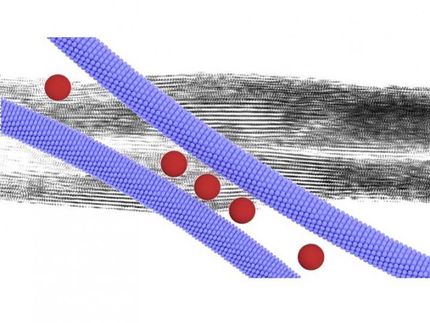Green chemists produce gold particles (and hydrogen) in water
This discovery “is a paradigm shift in how to make materials in a controlled way using water, with no other chemicals required, which contributes to a more sustainable future”
In a surprise discovery, Flinders University nanotechnology researchers have produced a range of different types of gold nanoparticles by adjusting water flow in the novel vortex fluidic device – without the need for toxic chemicals.

Flinders University Professor of Clean Technology Colin Raston with the vortex fluidic device he invented.
Courtesy Flinders University
The green chemistry lab work on nano gold formation also led to the discovery of a contact electrification reaction in water in the device – which resulted in the generation of hydrogen and hydrogen peroxide.
In a new article in Small Science, Australian and overseas scientists collaborated on the developing size and form of gold nanoparticles from various VFD processing parameters and concentrations of gold chloride solution.
“Through this research, we have discovered a new phenomenon in the vortex fluidic device. The photo-contact electrificiation process at the solid-liquid interface which could be used in other chemical and biological reactions,” says Flinders PhD Badriah Mazen B Alotaibi, who led the study.
“We also have achieved synthesis of pure, pristine gold nanoparticles in water in the VFD, without the use of chemicals commonly used – and thus minimising waste,” says Mr Alotaibi.
“This method is significant for the formation of nanomaterials in general because it is a green process, quick, scalable and yields nanoparticles with new properties.”
Gold nanoparticles’ size and shape are critical for a range of applications – from drug delivery to catalysis, sensing and electronics – due to their physical, chemical and optical properties.
The vortex fluidic device, devised a decade ago by senior author Flinders University Professor Colin Raston, is a rapidly rotating tube open at one end with liquids delivered through jet feeds. Different rotational speeds and external application of light in the device can be used to synthesise particles to specification.
“Researchers around the world are now finding the continuous flow, thin film fluidic device useful in exploring and optimising more sustainable nano-scale processing techniques,” says Professor Raston.
“In this latest experiment, we hypothesise that the high shear regimes of the VFD led to the quantum mechanical effect known as contact electrification, which is another exciting development.”
Professor Raston says this discovery “is a paradigm shift in how to make materials in a controlled way using water, with no other chemicals required, which contributes to a more sustainable future”.
Original publication
Other news from the department science

Get the chemical industry in your inbox
By submitting this form you agree that LUMITOS AG will send you the newsletter(s) selected above by email. Your data will not be passed on to third parties. Your data will be stored and processed in accordance with our data protection regulations. LUMITOS may contact you by email for the purpose of advertising or market and opinion surveys. You can revoke your consent at any time without giving reasons to LUMITOS AG, Ernst-Augustin-Str. 2, 12489 Berlin, Germany or by e-mail at revoke@lumitos.com with effect for the future. In addition, each email contains a link to unsubscribe from the corresponding newsletter.





























































